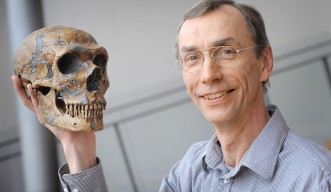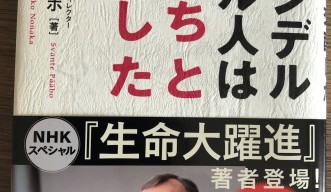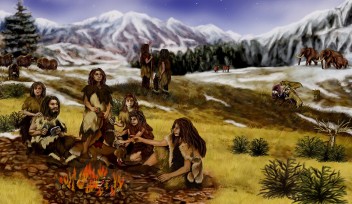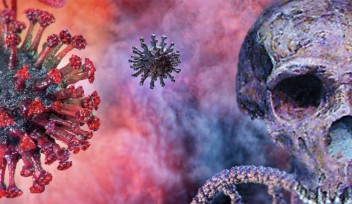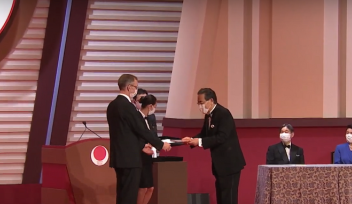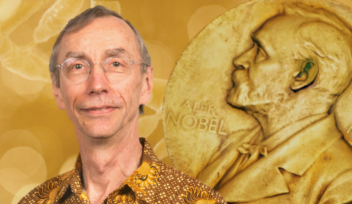Of Neanderthals and Denisovans: What defines us as modern humans?
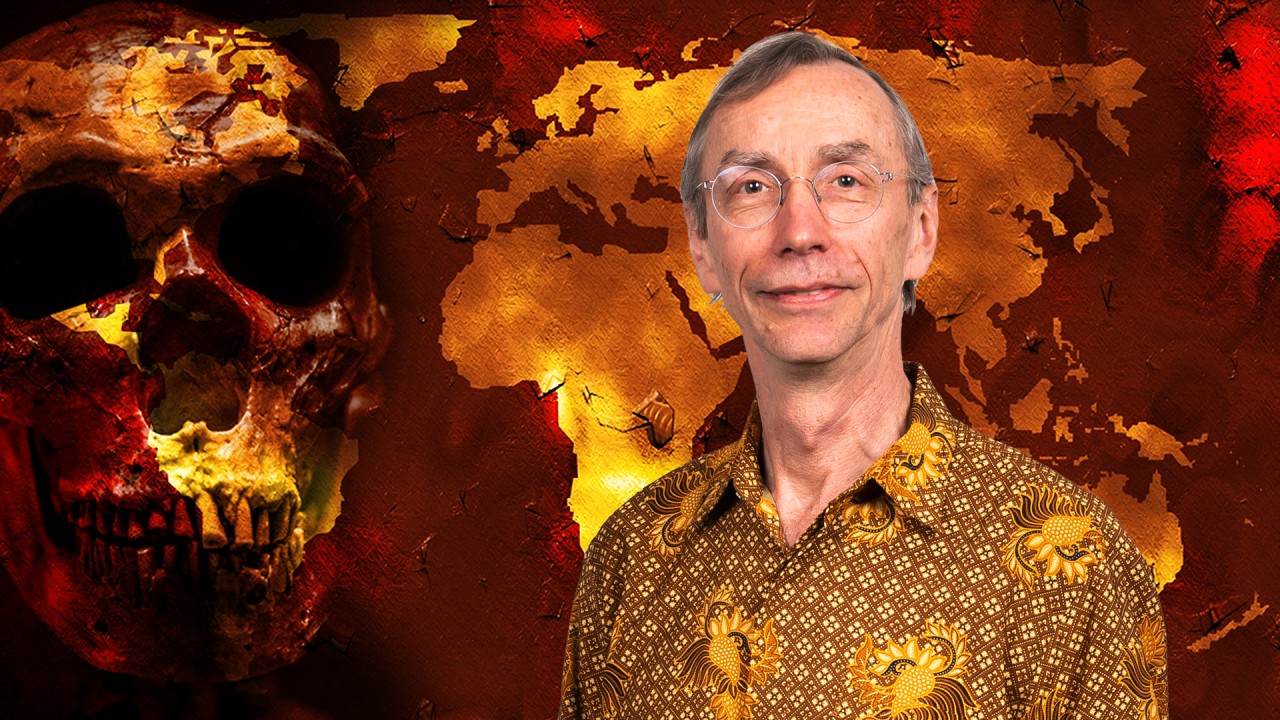
Up until 40,000 years ago, we were not the only humans to exist. Neanderthals roamed across the steppes of Europe. Denisovans occupied Asia. There were ‘hobbits’ in Indonesia and at least three other hominin forms in Africa. These early humans were like present-day people in many ways – they had comparatively large brains, lived in hunter-gatherer societies, and could control fire. Then, almost simultaneously and aligned with when modern humans spread across the globe, these other forms vanished. The last 30 to 40,000 years of our history have been unique in that we are alone. We are the only type of human around.
Well, not completely. As one researcher who recently joined the Okinawa Institute of Science and Technology Graduate University (OIST) has previously discovered, most living humans have a tiny bit of Neanderthal DNA or Denisovan DNA (or both) in their genomes. And he’s combining genomics, neurobiology, and paleontology to examine what these ancient forms of humans were like, and how they continue to influence us today.
“In 2010, we had the first rough version of the entire genome of the Neanderthal and saw this pattern that showed that Neanderthal had mixed with the ancestors of present-day people. So, in some sense, these forms of humans are not totally extinct, they live on a little bit,” explained Professor Svante Pääbo, who joined OIST in May to lead the Human Evolutionary Genomics Unit. “We’re interested in how we’re related to these extinct forms of humans. How we interacted with them when we met them. And what defines modern humans.”
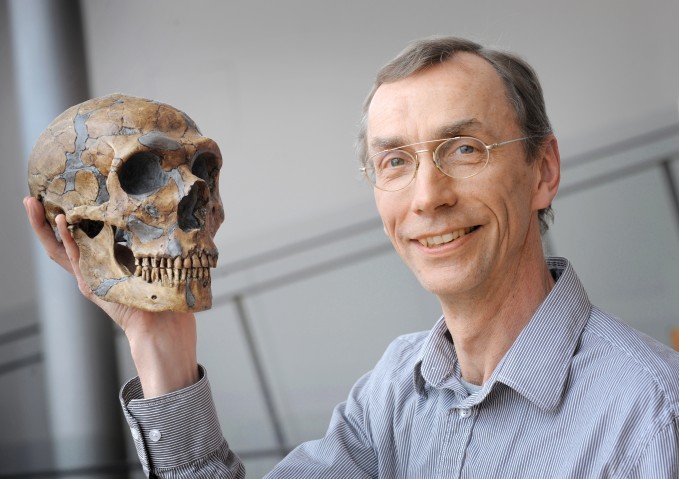
For many years, Professor Pääbo and his group at the Max Planck Institute for Evolutionary Biology have been developing methods to extract genomes from old remains and extinct animals. The group has made significant contributions to our understanding of human evolution – being the first to sequence the genome of Neanderthals as well as the first to discover Denisovans.
“There’s a cave in the mountains in southern Siberia, which is the only known site where Denisovans, Neanderthals, and modern humans have all lived,” said Professor Pääbo. “In 2016, we sequenced the DNA from a small bone fragment from there. There was no way of telling that this was a human bone simply by looking at it and it was amongst thousands of animal bone fragments. However, we identified it as human by analyzing its proteins through mass spectrometry. When we examined the genome, we found it had belonged to a woman, whose mother had been a Neanderthal and whose father, a Denisovan. This clearly shows why this research is so useful. We can gain insights from things that have little or no morphological value.”
The functional differences between modern and ancient humans
Professor Pääbo plans to spend around three months each year at OIST and, whilst here, he’ll be focusing on the genetic differences between modern humans and both Neanderthals and Denisovans.
“In some sense, I think the logical continuation of sequencing the genomes of the Neanderthals and the Denisovans is to now try to understand the functional consequences these different genomes have,” explained Professor Pääbo. “Essentially, we’re interested in the genetic changes that are both unique to present-day humans and carried by everyone.”
The group will develop methods to improve genome editing in human stem cells and in mice. They plan to insert ancestral genetic variants into the human stem cells, and some of these variants into the mice. This will result in those genes in their genomes looking like those of Neanderthals or Denisovans and allow the research group to understand what the consequences are of the genetic changes that are unique to modern humans.
“In the mice, we can study, for example, the effects these genes have on the metabolism, the development of the brain and the function of neurons,” said Professor Pääbo.
Exploring our Neanderthal connections
Another project Professor Pääbo will be involved in at OIST is looking at rare variants among present-day humans that came from Neanderthals and Denisovans. To do this, the research group is working with large biobanks that have the medical records, genomic information, and a questionnaire filled out by the participants.
“So far we’ve been working with UK biobank, which has about half a million people,” said Professor Pääbo. “We can find genes that only occur in one person in a thousand or so that come from Neanderthals. And we can look at what consequences they have in the present day. We want to expand this work and we are excited about the possibility of working in Japan because the Japanese have DNA from both Neanderthals and Denisovans.”
Professor Pääbo went on to explain that there are some very interesting contributions from these forms of humans that are particularly relevant in Asia. One example is Tibetans who live at high altitudes. Many of them have a genetic mutation that allows its carriers to absorb more oxygen into their blood without making more red blood cells. For non-Tibetans, the blood simply gets thicker when they move to higher altitudes, which causes problems with blood clots. Previous research found that this adaptation is very likely to have come from Denisovans into the ancestors of Tibetans.
“So, it’s quite probably that there wouldn’t have been such big populations at about 3000m altitude in Tibet without this Denisovan contribution,” said Professor Pääbo. “There are other examples like this, and I think we’ll find more over the next few years.”
As both research projects lie at the interface of genomics and neurobiology, Professor Pääbo is especially excited to collaborate with colleagues at OIST who are working in these fields. “There are large communities of people who are interested in both areas so it will be a wonderful place to be.”

In 2014, Professor Pääbo published a book, Neanderthal Man: In Search of Lost Genomes that combines scientific findings with personal anecdotes to describe his research into the DNA of Neanderthals. Much of the book is dedicated to his group’s effort towards mapping the Neanderthal genome.
When asked about a highlight in his career, he immediately said that it was when his group realized they first had a DNA sequence from an extinct form of human in 1996. “By that stage, we knew the variations that occur in present-day people in this piece of DNA very well. So, when it came out of the sequencing machines, we were immediately aware that it was human-like but not like any present-day human. It was a Neanderthal. That was an amazing moment.”
Research Unit
For press enquiries:
Press Inquiry Form










